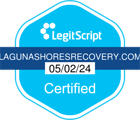The anxiety cycle can keep individuals trapped in patterns of worry and avoidance, often intensifying stress over time. Breaking this cycle involves recognizing triggers and developing effective coping strategies.
Exploring how to disrupt these patterns opens pathways to relief and mental clarity, especially with support from places like Laguna Shores Recovery in Orange County, California.
What is Anxiety?
Anxiety is a natural emotional reaction marked by feelings of worry, fear, or discomfort. It often arises when individuals perceive potential threats, uncertainty, or environmental stress. Unlike fear, which is a reaction to immediate danger, anxiety tends to be more anticipatory, focusing on future situations or perceived challenges. While mild anxiety can be a normal and even helpful response, alerting someone to potential risks, it becomes problematic when it occurs excessively or in situations where no real threat is present.
Anxiety manifests in both physical and mental ways. Physically, it might cause symptoms like an increased heart rate, sweating, or muscle tension. Mentally, it can involve persistent worry, nervousness, or a sense of dread. While everyone experiences some level of anxiety, chronic or intense stress can interfere with daily life, leading to conditions that may require management or treatment. If you’re unsure whether your symptoms resemble more severe episodes, taking an anxiety attack test can help you better understand what you’re experiencing.
Types of Anxiety Disorders
Anxiety disorders encompass several conditions where persistent anxiety interferes with daily functioning. Each type has unique characteristics but shares an underlying sense of excessive worry or fear.

This involves persistent and uncontrollable worry about various aspects of life, such as health, work, or relationships, often accompanied by physical symptoms like restlessness and fatigue.
It’s marked by sudden, intense episodes of fear known as panic attacks, often with physical symptoms like chest pain, shortness of breath, or dizziness, which may lead to avoidance behaviors.
(Social phobia) involves intense fear of social situations, stemming from concerns about embarrassment or judgment, often leading individuals to avoid social interactions.
These involve intense fears of specific objects or situations—like heights, animals, or flying—which can result in avoidance behaviors that disrupt daily life.
These also involve anxiety but are distinct due to the presence of compulsions in OCD and trauma-related symptoms in PTSD. Understanding these types helps in identifying effective treatment approaches.
The Levels of Anxiety
Anxiety exists on a spectrum, ranging from mild to severe levels, each impacting individuals differently.
It’s common and can even be beneficial, motivating individuals to prepare or focus on specific tasks. This level of anxiety may cause minor physical symptoms, like slight tension or restlessness, without significantly interfering with daily life.
It intensifies these symptoms, often leading to increased nervousness, difficulty concentrating, and heightened physical responses such as an elevated heart rate. While still manageable, moderate anxiety may start to affect performance and decision-making in certain situations.
This brings stronger physical and emotional symptoms, often overwhelming the person. At this level, anxiety can disrupt daily activities, making it challenging to function normally. Concentration may be severely impaired, and there is often an intense urge to avoid anxiety-provoking situations.
This is the most intense, leading to extreme physical symptoms such as chest pain, shortness of breath, and a sense of impending doom. This level may result in panic attacks, and individuals may feel disconnected or out of control, requiring professional support to manage. Understanding these levels can aid in identifying appropriate coping strategies.
What is the Anxiety Cycle?
The anxiety cycle is a repeating pattern in which anxiety perpetuates itself, often growing stronger over time. It typically starts with a triggering thought or situation that causes worry or fear. This worry activates the body’s “fight or flight” response, leading to physical symptoms like a racing heart, muscle tension, or shortness of breath, which can heighten feelings of fear and reinforce the belief that something is wrong.
To avoid this discomfort, individuals often engage in avoidance behaviors, steering clear of the situation or thoughts that caused their anxiety. While avoidance may provide temporary relief, it ultimately reinforces the fear, as the brain doesn’t get the chance to process and disprove the perceived threat. The next time a similar situation arises, anxiety returns, sometimes even stronger, creating a cycle that can be difficult to break.
By recognizing this pattern or cycle, individuals can begin to take steps to interrupt it, often with strategies that help them face rather than avoid their fears.
The 4 Stages of the Anxiety Cycle
The anxiety cycle typically progresses through four stages, each reinforcing the next, creating a self-perpetuating loop that can be challenging to break.
The cycle begins with a triggering thought, event, or situation that induces worry or fear. This trigger can be specific, such as public speaking, or more general, like a worry about health or safety. The mind interprets this as a potential threat, initiating the cycle.
In response to the trigger, the body activates the “fight or flight” response, leading to symptoms like a rapid heartbeat, muscle tension, or shortness of breath. These physical symptoms increase the sense of fear or unease, reinforcing the feeling that there’s something to fear.
To reduce discomfort, individuals may avoid the triggering situation or thoughts. While avoidance brings temporary relief, it strengthens the belief that the trigger is dangerous or unmanageable.
Avoidance confirms and intensifies anxiety, as the mind believes avoiding the trigger prevents harm. When the situation arises again, anxiety returns, often stronger. Recognizing these stages is crucial in finding effective strategies to interrupt the cycle.

How Does Anxiety Affect the Brain and Body?
Anxiety affects both the brain and body in significant ways, especially when it becomes chronic. In the brain, anxiety activates the amygdala, the region responsible for processing fear. Repeated activation of the amygdala can lead to heightened sensitivity, causing even minor stressors to trigger strong fear responses. Over time, areas like the prefrontal cortex, which helps with decision-making and rational thought, may become less effective in regulating these responses, making it harder to manage or suppress anxious thoughts.
Physically, chronic anxiety keeps the body in a constant state of “fight or flight,” leading to elevated levels of stress hormones like cortisol and adrenaline. Persistent exposure to these hormones can cause muscle tension, high blood pressure, and weakened immune function, increasing susceptibility to illness. It may also lead to digestive issues, insomnia, and fatigue.
Over time, this cycle of anxiety can contribute to mental health conditions such as depression and physical health problems, including heart disease and gastrointestinal issues. Recognizing and addressing anxiety early can prevent these long-term impacts, improving overall health and well-being.
Treatment for Anxiety Disorders
Breaking the anxiety cycle involves a combination of therapeutic approaches, self-help strategies, and sometimes medication.
Cognitive Behavioral Therapy (CBT)
Cognitive-behavioral therapy (CBT) is one of the most effective treatments, focusing on identifying and challenging negative thought patterns that contribute to anxiety. By reshaping these thoughts, individuals can alter their emotional responses and behaviors, helping to break the cycle.
Exposure Therapy
This is another powerful method where individuals gradually face their fears in a controlled environment. This exposure helps desensitize the individual to the anxiety-provoking situation, reducing the avoidance behavior that perpetuates the cycle.
Mindfulness and Relaxation Techniques
Techniques such as meditation, deep breathing, and progressive muscle relaxation can also be beneficial. These practices promote awareness of the present moment and help reduce physical symptoms of anxiety, providing immediate relief.
In certain cases, medications like antidepressants or anti-anxiety drugs may be recommended to help manage symptoms.
Building a strong support system, engaging in regular physical activity, and maintaining a balanced diet can also play crucial roles in breaking the cycle. Each individual may find different combinations of these strategies effective, highlighting the importance of a personalized approach to treatment.
You’re Not Alone at Laguna Shores Recovery
At Laguna Shores Recovery, we understand that anxiety can feel isolating and overwhelming. You are not alone in this journey. Our compassionate team is dedicated to providing the support and resources you need to break free from the anxiety cycle and reclaim your life. We offer evidence-based therapies tailored to your individual needs, helping you develop effective coping strategies and build resilience.
Whether you’re struggling with generalized anxiety, panic attacks, or social anxiety, our experienced professionals are here to guide you every step of the way. We create a safe and nurturing environment where you can explore your feelings, learn valuable skills, and connect with others who share similar experiences.
Don’t let anxiety dictate your life any longer. Reach out to us today to take the first step toward healing and recovery. Our admissions team is ready to listen and assist you in finding the right path forward.
Contact us at Laguna Shores Recovery to learn more about our programs and how we can help you find peace of mind. You deserve support, and we’re here for you.

 Matthew Beck B.A, M.A, LMFT
Matthew Beck B.A, M.A, LMFT 


